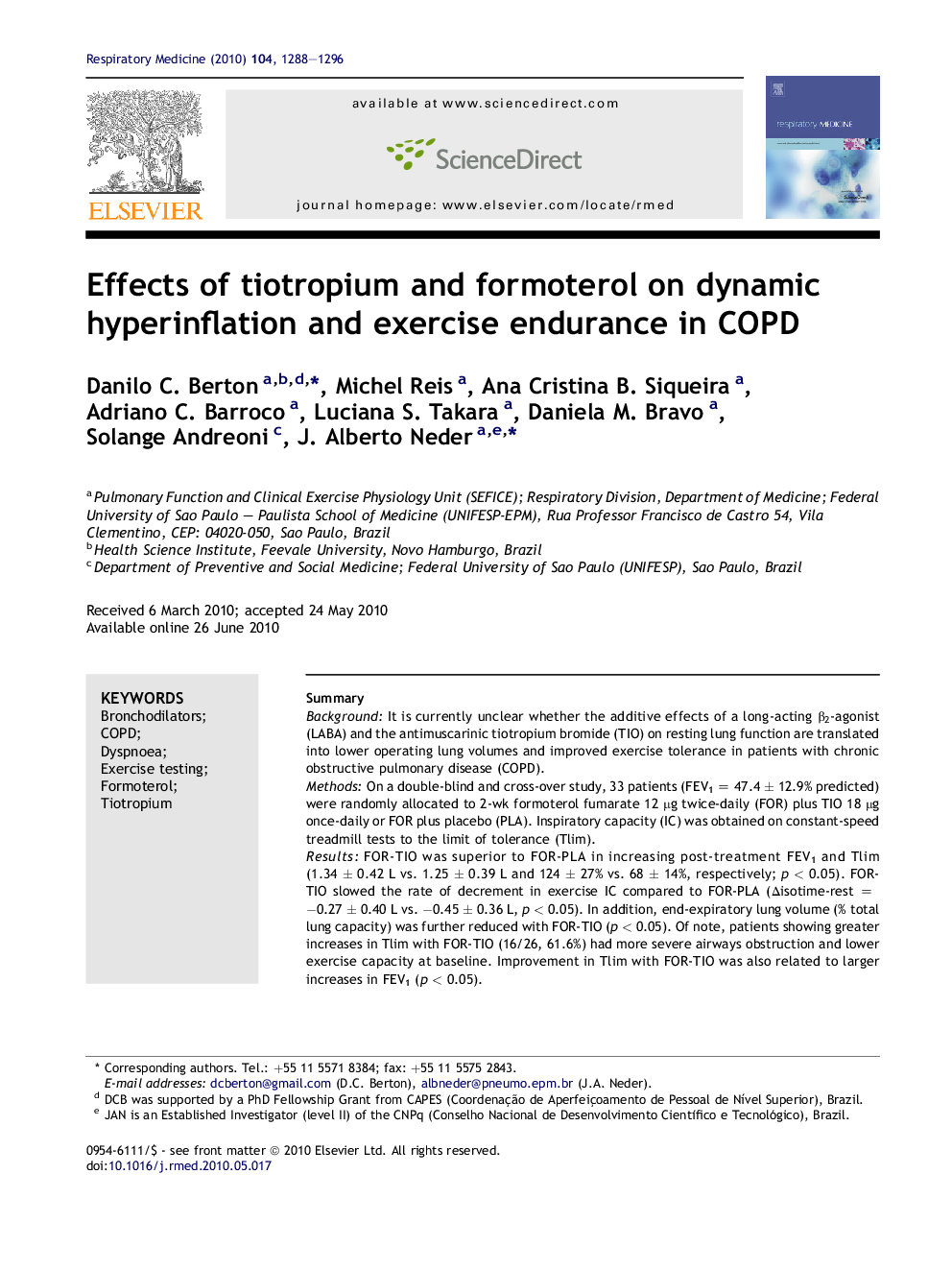| Article ID | Journal | Published Year | Pages | File Type |
|---|---|---|---|---|
| 4211957 | Respiratory Medicine | 2010 | 9 Pages |
SummaryBackgroundIt is currently unclear whether the additive effects of a long-acting β2-agonist (LABA) and the antimuscarinic tiotropium bromide (TIO) on resting lung function are translated into lower operating lung volumes and improved exercise tolerance in patients with chronic obstructive pulmonary disease (COPD).MethodsOn a double-blind and cross-over study, 33 patients (FEV1 = 47.4 ± 12.9% predicted) were randomly allocated to 2-wk formoterol fumarate 12 μg twice-daily (FOR) plus TIO 18 μg once-daily or FOR plus placebo (PLA). Inspiratory capacity (IC) was obtained on constant-speed treadmill tests to the limit of tolerance (Tlim).ResultsFOR-TIO was superior to FOR-PLA in increasing post-treatment FEV1 and Tlim (1.34 ± 0.42 L vs. 1.25 ± 0.39 L and 124 ± 27% vs. 68 ± 14%, respectively; p < 0.05). FOR-TIO slowed the rate of decrement in exercise IC compared to FOR-PLA (Δisotime-rest = −0.27 ± 0.40 L vs. −0.45 ± 0.36 L, p < 0.05). In addition, end-expiratory lung volume (% total lung capacity) was further reduced with FOR-TIO (p < 0.05). Of note, patients showing greater increases in Tlim with FOR-TIO (16/26, 61.6%) had more severe airways obstruction and lower exercise capacity at baseline. Improvement in Tlim with FOR-TIO was also related to larger increases in FEV1 (p < 0.05).ConclusionsCompared to FOR monotherapy, FOR-TIO further improved effort-induced dynamic hyperinflation and exercise endurance in patients with moderate-to-severe COPD. These beneficial consequences were more likely to be found in severely-disabled patients with larger resting functional responses to the combination therapy.Trial registration: Clinicaltrials.gov Identifier: NCT00680056 [ClinicalTrials.gov].
